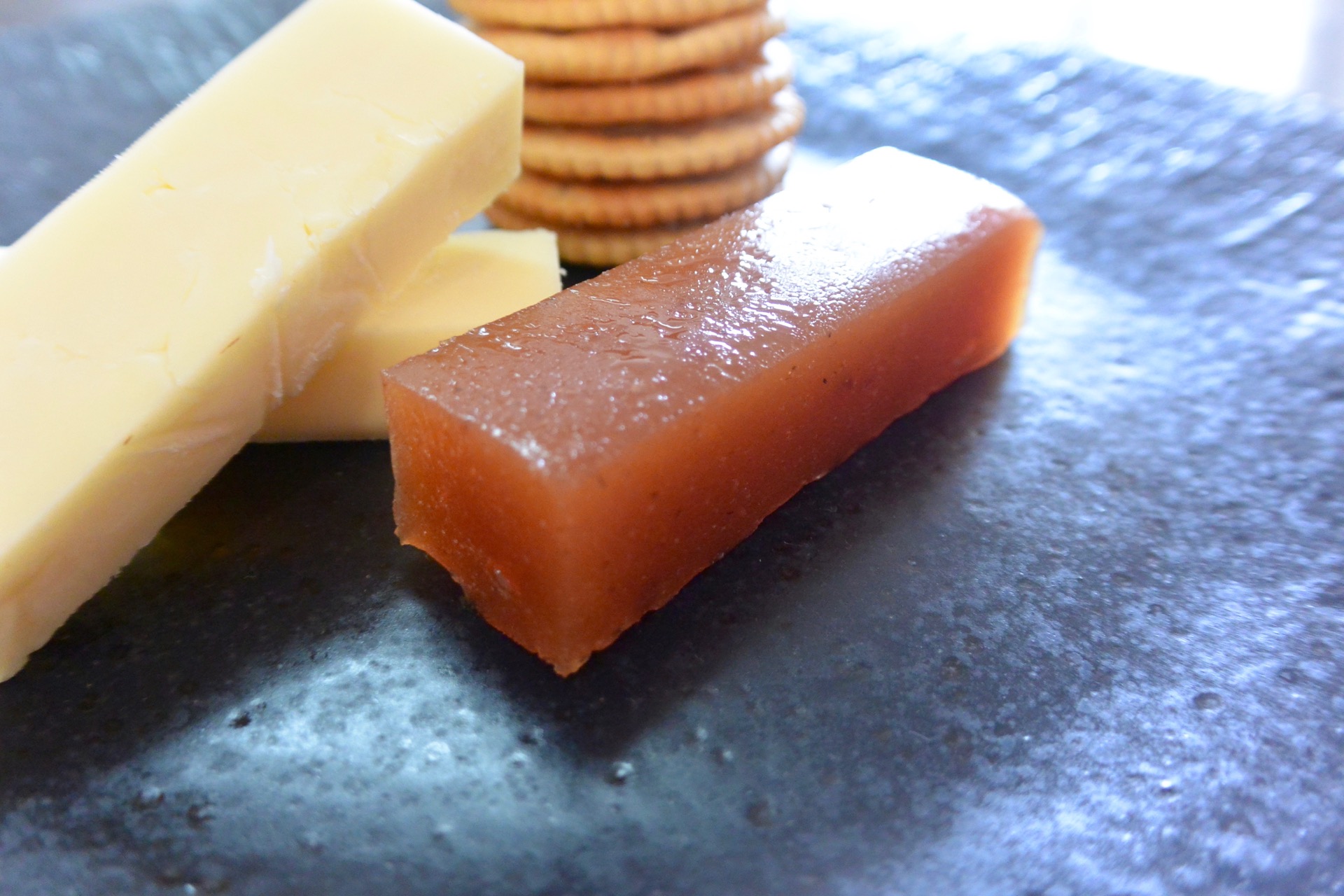Quince Paste
Quince Paste
Cooking Mode:
Steam
Equipment
- chef’s knife
- teaspoon or melon baller
- foil
- blender
- mixing bowl
- fine mesh sieve
- rubber spatula
- deep frypan or saucepan
- cling film
- plastic or glass container (approx 1lt)
- perforated baking tray
- scales
 Ingredients
Ingredients
- 2 whole quince
- 4 cloves
- 450-550gm caster sugar
- extra virgin olive oil

METHOD
To begin cut the quinces in half and with a teaspoon or melon baller remove the core and seeds from the quinces. Stab 1 clove into each half of the quinces. Sprinkle a little caster sugar over each half and wrap each quince piece in foil. Place the quince pieces on a perforated tray and into a pre-heated oven steam setting 100 °C for 1.5 hours.
Once cooked remove the quince from the oven and un-wrap the quince and place the quince pieces and any cooking juices in
to a blender.
Blend on high speed until there is a smooth puree. Once blended pass the puree through a fine mesh sieve into a mixing bowl.
Place a saucepan or fry pan on the scales and transfer the puree to the frypan or saucepan noting the weight of the puree.
“Zero” the scales and add 75% of the total weight of the puree with caster sugar
e.g. If the weight of the puree is 600gm the amount of caster sugar will be 450gm.
Mix the sugar in well with a spoon or spatula and place the puree over medium heat and cook until the puree begins to boil and bubble. Ensure you stir the puree constantly to avoid the sugar “catching and burning”
Continue cooking for a further 12-15 minutes until the mixture becomes thick, glossy and deep red in colour.
Remove the cooked puree from the stove and set aside. Lightly oil a plastic or glass container. Transfer the puree to the container and cover the surface with cling film. Transfer the container to the fridge for 3-4 hours.
Once set remove from the fridge and cut portions with a sharp knife and serve with cheese or use as a glaze for roasted beef lamb or venison.
Once cooked remove the quince from the oven and un-wrap the quince and place the quince pieces and any cooking juices in
to a blender.
Blend on high speed until there is a smooth puree. Once blended pass the puree through a fine mesh sieve into a mixing bowl.
Place a saucepan or fry pan on the scales and transfer the puree to the frypan or saucepan noting the weight of the puree.
“Zero” the scales and add 75% of the total weight of the puree with caster sugar
e.g. If the weight of the puree is 600gm the amount of caster sugar will be 450gm.
Mix the sugar in well with a spoon or spatula and place the puree over medium heat and cook until the puree begins to boil and bubble. Ensure you stir the puree constantly to avoid the sugar “catching and burning”
Continue cooking for a further 12-15 minutes until the mixture becomes thick, glossy and deep red in colour.
Remove the cooked puree from the stove and set aside. Lightly oil a plastic or glass container. Transfer the puree to the container and cover the surface with cling film. Transfer the container to the fridge for 3-4 hours.
Once set remove from the fridge and cut portions with a sharp knife and serve with cheese or use as a glaze for roasted beef lamb or venison.
HINTS & TIPS
Quinces are available during winter and seem to have a relatively short season so take advantage of them when they are available.
Quince past freezes very well. Wrap the paste in cling film and foil to avoid any possibility of freezer burn.
The high content of pectin in quince is what sets the puree once cool. The pectin is most prevalent just under the skin so when making quince paste leave the skins on and blend your steamed quinces skins and all.
Quince past freezes very well. Wrap the paste in cling film and foil to avoid any possibility of freezer burn.
The high content of pectin in quince is what sets the puree once cool. The pectin is most prevalent just under the skin so when making quince paste leave the skins on and blend your steamed quinces skins and all.
Want to Print the Recipe ?
To Download or Print this recipe in PDF format, click the button below!